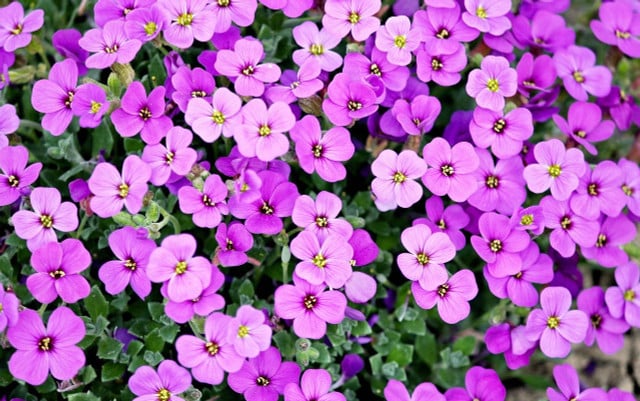Guerrilla gardening is a grassroots movement that uses gardening as a form of protest, and as a means of community building. In this article we’ll tell you everything you need to know about guerrilla gardening, and how you can get involved to help make your neighborhood a greener place.
Humans are deeply perceptive and affectable creatures. We are profoundly connected to and influenced by our surroundings; shaped by our environment just as much as we shape it. Things that may seem trivial, like living in a neighborhood that you find unappealing and uninviting, has a serious impact on your general sense of well being, and your sense of well-being (or lack thereof) affects virtually everything else in your life.
People living in places where urban decay has set in know this very well. Vacant lots, run-down apartment buildings, dirt patches in the sidewalks, neglected public parks, litter in ever corner… it’s difficult to maintain a positive attitude while living in what looks and feels like an inner-city dystopia, not to mention the social and economic disadvantages that often come with it.
Guerrilla Gardening: Grassroots Movement

It’s simple: being in a beautiful place can lift your spirits, while living in a place that is neglected can make you feel like you are worth less. For this reason, in the early 1970’s, Liz Christy and her group of green-thumbed vigilantes called the Green Guerrillas decided to take matters into their own hands, and started out on a mission to transform their New York City neighborhood into a more psychologically healthy place.
They threw “seed bombs” over the fences of vacant lots, planted sunflowers in the center meridians of streets, put flower boxes in the windows of abandoned buildings, and started a large community garden in an empty lot. Soon, their project began to gain momentum: local nurseries donated clippings and seeds, volunteers came to lend a hand, and as the grassroots movement grew, community gardens began appearing all throughout the city.
Since the 1970’s, the movement has grown far beyond the streets of New York City. Today, guerrilla gardening has taken up roots in countries all across the world, and its goals have expanded far beyond making urban a little greener. A vehicle of positive change, guerrilla gardening is about bringing communities together, rallying behind environmental causes, preserving green spaces, and increasing the availability of locally grown fruits and vegetables.
Is Guerrilla Gardening Legal?



Guerrilla gardening is a form of activism. By definition, it involves growing plants on land without the owners permission. Guerrilla gardeners therefore generally work outside the law and carry a certain level of risk.
The idea behind guerrilla gardening is that public land belongs to everyone, and if the local government is not taking care of the green spaces in a neighborhood (despite taxes that exist specifically for this purpose), citizens should be allowed to take it upon themselves to cultivate that land, planting trees, flowers, and even edible plants for everyone to enjoy. Most gardeners work at night, when there are less prying eyes, in attempts to avoid any possible negative confrontations.
But, you might say, why not just ask for permission? Surely local officials would have nothing against people trying to beautify public space for free? According to Richard Reynolds, a British guerrilla gardener, this is often not the case. In a Ted Talk from 2013 he reports of his disputes with city council members regarding his gardening projects. In some places, the work of the guerrilla gardeners has been destroyed or removed. Reynolds has even had encounters with the police.
However, the authorities’ responses to guerrilla gardening can vary greatly: City officials of Norwalk, Southern California, have responded positively to the projects of guerrilla gardener Scott Bunnell and even granted him access to the sprinkler system of one garden. The group Green Guerrillas, too, has worked together with local authorities to improve community gardens.
Here are some examples of guerrilla gardening postet by blogs like the British website Guerrilla Gardening.org and L.A. Green Grounds:
Positive Change
In many cases, through sheer persistence (and respectful dialogue) guerrilla gardeners have pried open the door to political support for their cause. One such example is Los Angeles resident Ron Finley. Frustrated by the fact that there was no convenient way to get his hands on a local, pesticide-free tomato in his working-class neighborhood, he decided to plant tomato plants outside his home in the space between the sidewalk and the street.
When city officials stopped him, his story went viral. He launched a nonprofit called L.A. Green Grounds and quickly became the face of a public campaign against the city. Finally, the city agreed to change the laws that prohibit fruits and vegetables to be planted along sidewalks. Today, the nonprofit runs “dig-ins”, workshops, and classes, and continues to support the L.A. community.
Although guerrilla gardening is done without official sanction, many gardeners still remain politically active, rallying to preserve green spaces, save trees, and fund parks. In this way, they work to affect change from the top-down as well as from the bottom-up.
You have a green thumb and want to improve your neighborhood, while working within the law? Then you should check if there are any community gardens in your city. Community gardens are shared plots on either private or public land. There, you can plant a variety of fruits, vegetables and other plants and take care of them together with others. You may have to pay an annual fee, though.
More Resources:



- GreenGuerrillas.org
- American Community Gardening Association
- Richard Reynolds TED Talks:
- Book: On Guerrilla Gardening by Richard Reynolds (you can buy the book online, e.g. on Amazon**.)
Do you like this post?






